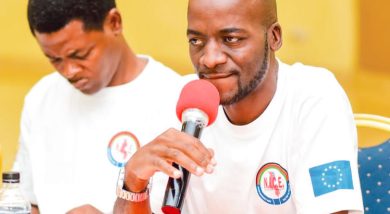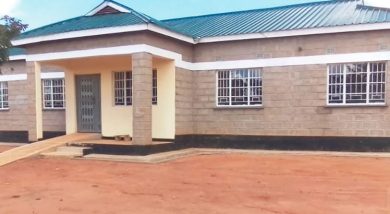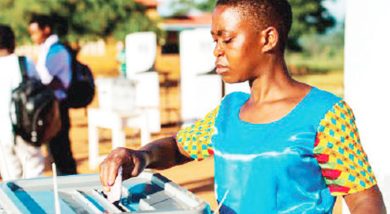LWB seeks K340bn to avert water crisis
Faced with a daunting task to supply water to a growing population, Lilongwe Water Board (LWB) says it needs about K340 billion ($460 million) to implement water projects to achieve sustainable water production and supply.
Briefing journalists last week, LWB chief executive officer Engineer Alfonso Chikuni said that in its search for the resources, the board has organised a maiden two-day Infrastructure Investment Financing Conference from tomorrow to Thursday in Lilongwe.
He said the resource mobilisation drive, which is based on the board’s investment plan, seeks to identify financiers for the Diamphwe Water Project and the raising of the water-level at the Kamuzu Dam 1 Project for sustainable water supply.

Chikuni said the conference is being organised in partnership with government through Ministry of Agriculture, Irrigation and Water Development and seeks to raise awareness and interest from international financing institutions and development partners on critical water investments the board needs..
He said the conference is expected to obtain commitments of external and local partners to fund the implementation of the LWB Investment Plan.
Said Chikuni: “Our projects are big, as can be seen by the magnitude of $600 million. But, so far, we have managed to raise about $167 million for various projects in our investment plan, meaning we remain with about $460 million [about K340 billion]. Currently, no single donor has come forward to invest with us.
“So, we think that if we bring together the donors and investors, we can open up dialogue. It’s not true that we are hosting the investor conference seeking resources because government has failed us, but what I would say is that government looks at a bigger picture of issues.”
He said the board has organised its project portfolio into seven pillars, some of which need huge investment, including the new water source at Diamphwe on the Lilongwe-Dedza border as well as production and distribution projects to cater for the increasing population.
Chikuni stressed the need for the board to plan ahead and secure investments into the water projects as the 2019 population for Lilongwe City shows to be over one million people and is projected to grow to 3.8 million by 2045.
But the conference is coming at a time when both the board and government seem to have abandoned the much-touted K400 billion Salima-Lilongwe Water Project after failing to find a financier over the past year.
South Africa-based Khato Civils had emerged as a contractor for the project. The company had moved in with some of its heavy-duty equipment for what was to be a historic and iconic project to move water across a 120-kilometre stretch from Lake Malawi in Salima to Lilongwe.
Reacting to the developments, Consumers Association of Malawi (Cama) executive director John Kapito described the planned LWB investment conference as a waste of time, saying government has failed to vouch for the board to secure financing for its major projects.
Noting that even investment forums organised by the the Malawi Investment and Trade Centre (Mitc) have failed to bring intended investment results, he hinted that government and its agencies have shown a lack of wit to start a process, or a project, and finish it to benefit the nation.
Kapito said: “We are not credible; we are not reliable. That’s why donors end up pulling out of these projects because we are not consistent in what we want to do. To me, I think as a country we don’t know what we want and we change goal posts anytime we make a decision.”
He suggested that LWB and government officials need to humble themselves and go back to the World Bank, which was ready to finance the Diamphwe Project, and sort out the issues that had frustrated the donor.
The World Bank abandoned the project in 2017 over several disagreements, including a long list of people claiming compensation for being displaced.
Had everything gone as planned, construction of the Diamphwe Multi-purpose Dam could have started in 2017 at a cost of K277 billion ($395 million) and could not only have met Lilongwe population’s water needs but it was cheaper than the Lilongwe-Salima project.
The World Bank committed around K52 billion ($71 million) of the K277 billion estimated cost. The bank’s International Development Association (IDA) also funded the project’s studies. Other financiers of the project were the African Development Bank (AfDB), the European Investment Bank and a public private partnership (PPP). Chikuni admitted that Lilongwe is faced with increased migration currently at six percent and the mushrooming unplanned settlements for the urban poor. He added that the board’s coverage is estimated at 85 percent of the population, with a supply time of 16 hours per day, on average.





